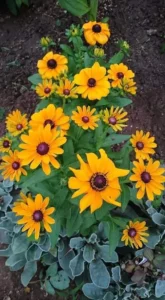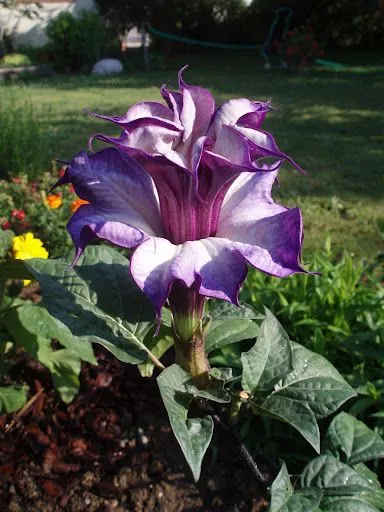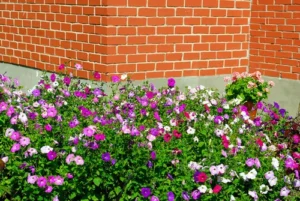Marigold Flower Gardening
The story of the marigold
Marigolds, with their vibrant blooms and rich history, have long been a beloved choice for gardeners seeking to bring a splash of color to their outdoor spaces. These cheerful flowers, native to the Americas, offer not just beauty but also a range of benefits that make them a versatile and valuable addition to any garden. From their ancient origins to their modern uses, marigolds offer a fascinating glimpse into the world of gardening.
The story of the marigold begins in the Americas, where indigenous peoples cultivated and revered these plants long before European explorers arrived. Marigolds, particularly the species known as Tagetes, have been used for centuries in traditional practices and ceremonies. The vibrant orange and yellow hues of the flowers symbolized the sun and were often incorporated into rituals and decorations. With the arrival of European settlers in the 16th century, marigolds were introduced to the rest of the world, quickly capturing the admiration of gardeners and horticulturists across continents.
Marigolds are part of the Asteraceae family, which includes a wide variety of flowering plants. Within this family, marigolds are known for their bright, daisy-like flowers and robust growth habits. There are several species of marigolds, each with its own unique characteristics, but the most common ones found in gardens today are the French marigold (Tagetes patula) and the African marigold (Tagetes erecta). These two species are prized for their vibrant colors, long blooming periods, and ease of care.

compelling aspects of marigold
One of the most compelling aspects of marigold gardening is the plant’s adaptability. Marigolds can thrive in a variety of growing conditions, making them a versatile choice for gardeners of all experience levels. They are well-suited for sunny spots, where their bright flowers can capture the sunlight and brighten the garden. Marigolds are also known for their tolerance of different soil types, though they do best in well-drained, fertile soil. Their ability to adapt to various environments makes them an excellent option for a range of garden settings, from formal flower beds to casual, mixed-border plantings.
Planting marigolds is a straightforward process that begins with selecting high-quality seeds or plants from a reputable source. When choosing seeds, look for varieties that are known for their strong germination rates and vibrant blooms. Marigold seeds are relatively easy to sow, either directly in the garden or started indoors before the last frost. If starting seeds indoors, sow them about 6 to 8 weeks before the last expected frost. Plant the seeds in seed-starting trays filled with a quality seed-starting mix, and keep them in a warm, sunny location until they germinate. Once the seedlings have developed a few sets of true leaves, they can be transplanted into the garden.
When planting marigold seedlings or seeds directly into the garden, choose a location that receives full sun for at least 6 to 8 hours a day. Marigolds thrive in sunny environments, where their flowers can fully develop and produce the vibrant colors that gardeners love. Prepare the soil by loosening it and mixing in organic matter such as compost or aged manure to improve soil structure and fertility. Marigolds do not require overly rich soil, but a well-balanced mix will support healthy growth and abundant blooms.
Spacing is an important consideration when planting marigolds. Depending on the variety, marigold plants can range from compact, dwarf types to larger, bushier forms. For smaller varieties, space the plants about 6 to 12 inches apart. For larger varieties, space them 12 to 18 inches apart to allow for their full growth and to prevent overcrowding. Proper spacing ensures that each plant has enough room to develop and receive adequate sunlight, which promotes healthy growth and vibrant blooms.
Watering marigolds
Watering marigolds is another essential aspect of their care. Marigolds prefer to be kept consistently moist but not waterlogged. It is important to water the plants regularly, especially during hot, dry periods. However, it is equally important to avoid overwatering, as excessive moisture can lead to root rot and other fungal diseases. To maintain the right balance, water the plants at the base, keeping the foliage dry. A layer of mulch around the plants can help retain soil moisture and reduce the frequency of watering.

Fertilization importance
Fertilization is also an important part of marigold care. Marigolds do not require heavy feeding, but a light application of a balanced, all-purpose fertilizer can support their growth and enhance their blooming performance. Fertilize the plants once a month during the growing season, following the instructions on the fertilizer package for the correct dosage. Over-fertilizing can lead to excessive foliage growth at the expense of blooms, so it is important to follow recommended guidelines and not to exceed the suggested amount.
As the marigold plants grow, they will produce a profusion of flowers throughout the summer. Deadheading, or the removal of spent blooms, is a simple yet effective way to encourage continuous flowering. By regularly cutting off the faded flowers, you can stimulate the plants to produce new blooms and keep the garden looking fresh and vibrant. Deadheading can be done by pinching off the old flowers or by using garden shears to remove them cleanly from the plant.
Marigolds are also known for their pest-repelling properties. The scent of marigold flowers is thought to deter a variety of garden pests, including aphids, nematodes, and even rabbits. Planting marigolds alongside vegetables or other susceptible plants can help protect these crops from unwanted pests. This natural pest control benefit adds an extra layer of value to marigold gardening, as it supports the health of the entire garden ecosystem.
In addition to their practical benefits, marigolds offer numerous aesthetic possibilities. Their bright, cheerful blooms can be used to create stunning garden displays, from bold, monochromatic color schemes to vibrant, mixed-flower arrangements. Marigolds come in a range of colors, including shades of orange, yellow, and red, and their flowers can have single or double layers of petals. This variety allows gardeners to experiment with different designs and combinations, creating visual interest and impact in the garden.
Marigold plants also lend themselves well to container gardening. Their compact growth habit makes them suitable for pots, hanging baskets, and window boxes. When growing marigolds in containers, choose a high-quality potting mix and ensure that the containers have drainage holes to prevent waterlogging. Marigolds in containers require regular watering and fertilization, but they can be a beautiful and versatile option for adding color to patios, balconies, and other outdoor spaces.
Marigold Gardening is Opportunity
Another exciting aspect of marigold gardening is the opportunity to explore different varieties and cultivars. Over the years, breeders have developed numerous marigold varieties, each with its own unique characteristics. Some varieties feature flowers with ruffled petals, while others have flowers that are single or semi-double. The size of the plants can vary from compact, bushy forms to tall, upright varieties. Exploring these different types can be a fun and rewarding way to discover new favorites and expand your marigold collection.
Marigolds also have a place in the world of floral arrangements. Their long-lasting blooms and vibrant colors make them a popular choice for bouquets and decorative arrangements. Marigolds can be used on their own or combined with other flowers to create beautiful, eye-catching displays. Their resilience means that they can be enjoyed both in the garden and in floral designs, offering a way to bring the beauty of your garden indoors.
In addition to their ornamental uses, marigolds have been recognized for their medicinal properties. The flowers and leaves of marigold plants have been used in traditional medicine for various purposes, including as a remedy for skin conditions and as an anti-inflammatory agent. While modern scientific research is still exploring the full extent of these benefits, the historical use of marigolds for medicinal purposes adds another layer of interest to their cultivation.

The future of marigold gardening is full of potential. As interest in gardening and sustainable practices continues to grow, marigolds are likely to remain a popular choice for gardeners seeking beautiful and beneficial plants. Advances in breeding and horticulture may lead to new varieties and applications for marigolds, offering exciting opportunities for gardeners to explore and enjoy.
Marigold gardening offers a rich and multifaceted experience for gardeners of all levels. From their ancient origins and historical significance to their modern uses and practical benefits, marigolds provide a wealth of opportunities for exploration and enjoyment. The process of growing and caring for marigolds is both fulfilling and rewarding, offering a chance to connect with nature, experiment with different designs, and experience the joy of watching these beautiful flowers flourish.
As you embark on your own marigold gardening journey, you will discover the many ways these remarkable plants can enhance your garden and bring joy to your outdoor space. Whether you are planting marigolds for their beauty, their pest-repelling properties, or their potential for creating floral arrangements, you will find that marigolds offer a wealth of benefits and pleasures.
In summary, marigolds are much more than just colorful flowers. They are a testament to the beauty and diversity of the natural world, offering a range of benefits from their vibrant blooms to their practical uses in the garden. The practice of growing marigolds is a rewarding experience that connects you with the rich history of these plants and offers opportunities for creativity, learning, and enjoyment. Embrace the beauty of marigolds and let them inspire your gardening efforts as you explore the many facets of these extraordinary flowers.
Marigold flower gardening is a practice that celebrates both the art and science of horticulture. The marigold’s bright colors, adaptability, and practical benefits make it a valuable addition to any garden. As you care for your marigolds and


